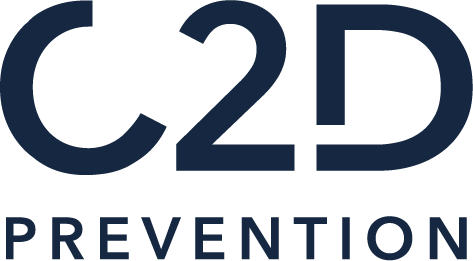Why Leadership Is a Key Factor in Workplace Safety
In a context where organizations must simultaneously manage operational, human, and regulatory challenges, building a sustainable safety culture can no longer rely solely on tools, frameworks, or technical systems (risk assessments, HSE training programs, prevention plans, OSH audits, etc.).
Field feedback and recent research in occupational psychology and organizational sciences show that three structural drivers shape safety performance: leadership, system architecture, and behavioral climate.
The Impact of Work Organization on Occupational Risk Prevention
Evidence is clear: managerial alignment is the most decisive factor in workplace safety.
A strong safety culture relies on:
- a visible and aligned leadership team,
- a coherent and understandable managerial framework,
- supervisors capable of combining technical expertise with human-centered support,
- a climate of trust that encourages upward reporting—essential for preventing psychosocial risks (PSR), occupational diseases, and workplace accidents.
When leadership is fragmented, safety becomes an unstable topic, regardless of how many tools are deployed.
Consistent leadership creates a consistent organization.

Simplifying HSE Systems to Improve Safety Performance
Modern organizations operate with a large number of safety instruments: QHSE procedures, safety training, safety days, root-cause analysis tools, safety indicators, risk-management software, OSH modules, risk evaluations, and more.
However, accumulation can produce the opposite effect of what is intended.
Recurring observations include:
- administrative overload perceived as a “layer-cake” system,
- multiple tools with limited integration,
- contradictory messages between departments,
- irregular or mechanical safety rituals,
- reduced field presence, despite its critical role for behavioral safety observations.
Research in ergonomics and industrial safety shows that overly complex systems naturally induce workarounds.
Effectiveness relies on simplicity, coherence, and collective ownership.
Safety Behaviors: What Neuroscience and Occupational Psychology Reveal
Recent approaches (next-generation Behaviour-Based Safety, work-related neuroscience, and human and organizational factors) demonstrate that safety behaviors are primarily influenced by:
- actual workload,
- daily operational priorities,
- alignment between rhetoric and reality,
- stress management and psychosocial risks,
- quality of supervisory support,
- perceived meaning and usefulness of rules,
- workplace ergonomics and musculoskeletal disorder (MSD) prevention.
Fluctuations observed in the field (variability in PPE use, decreased vigilance, managerial fatigue) are never a matter of willpower.
They reflect the organizational climate.
Conversely, when the environment is clear, supportive, and coherent, safe behaviors naturally emerge—without excessive constraint.
Conclusion
Organizations that achieve high performance in safety, occupational health, well-being, or QWL/QVCT are those capable of aligning:
- what leadership embodies,
- how systems are designed and integrated,
- the daily experience of workers.
This alignment creates a stable, predictable, and resilient safety culture.
Our Contribution
At C2D Prévention, we support organizations in:
- strategic alignment of leadership,
- simplification and integration of prevention systems,
- development of managerial competencies,
- diagnosing and transforming the safety climate,
- reducing workplace accidents and psychosocial risks,
- implementing effective, adapted QHSE and OSH frameworks.
Our approach combines science, field insights, and managerial support to design truly operational systems—durable, contextualized, and collectively shared.
Key Takeaways
- Safety culture depends first on leadership alignment, not the number of HSE tools.
- Overly complex systems naturally generate workarounds and weaken prevention.
- Safety behaviors reflect the actual work climate: workload, coherence, support, priorities.
- A durable culture relies on alignment between leadership, work organization, and field realities.
- Managerial support, system simplification, and daily coherence are the most effective levers to reduce accidents, PSR, and strengthen HSE/QVCT performance.
Why is leadership a determining factor in workplace safety?
Because it shapes managerial coherence, trust, role clarity, and reporting climate—key factors for preventing accidents, psychosocial risks, and occupational diseases.
Are HSE tools (risk assessments, audits, incident analysis) sufficient to build a safety culture?
No. Without leadership alignment and integrated systems, tools quickly become mechanical and poorly adopted.
Why does simplifying QHSE systems improve safety?
Because dense systems create overload, workarounds, and reduced field time. Prevention is more effective when systems are clear, integrated, and accessible.
What truly influences safety behaviors?
Actual workload, coherence between talk and practice, stress management, supervisory support, ergonomics, and daily operational priorities.
Why are PPE and safety rules not always applied?
Because behavior depends on work context: pressure, contradictions, fatigue, lack of meaning, or unclear priorities.
What is the link between safety culture and QWL/QVCT?
A coherent safety culture improves well-being at work, reduces psychosocial risks, and strengthens long-term physical and mental health.
How can C2D Prévention support my organization?
By aligning leadership, simplifying HSE/QHSE systems, strengthening managerial skills, diagnosing safety climate, and sustainably reducing professional risks.
When should an external partner be contacted?
When safety stagnates despite tools, when accidents persist, or when teams experience overload, inconsistencies, or lack of clarity.
Adra, I., Nadeem, S., & Ruikar, K. (2024). What is safety leadership? A systematic review of definitions. Journal of Safety Research, 88, 1–15. https://doi.org/10.1016/j.jsr.2023.12.004
Carra, S. (2025). Behaviour-Based Safety: A systematic literature review. Sustainability, 16(23), 10195. https://doi.org/10.3390/su162310195
Berglund, L., Mett, A., & Lindberg, A. (2025). Structures and processes for safety culture: Perspectives from safety leaders in the Swedish construction industry. Safety, 11(2), 47. https://doi.org/10.3390/safety11020047
Carrillo, R. A. (2011). Complexity and safety. Journal of Safety Research, 42(4), 293–300. https://doi.org/10.1016/j.jsr.2011.05.004
Ciekanowski, Z., Ciekanowska, D., & Kwiatkowski, J. (2025). The role of a leader in shaping the safety culture of an organization. European Research Studies Journal, 28(1), 1–16. https://ersj.eu/journal/3923
